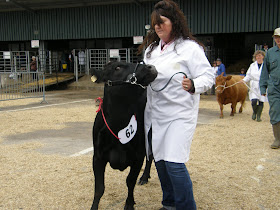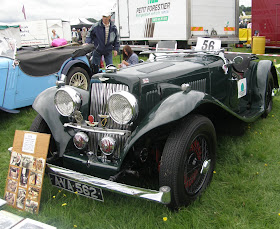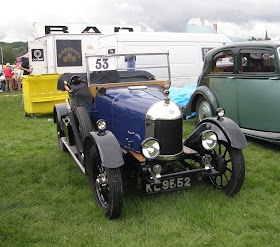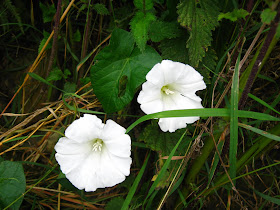
Here are more excerpts from John Clare's poem, it is wonderfully descriptive of the heat and backbreaking toil of the harvest which involved all the village - young and old, male and female.
Harvest approaches with its bustling day
The wheat tans brown and barley bleaches grey
In yellow garb the oat land intervenes
And tawney glooms the valley thronged with beans
Silent the village grows, wood wandering dreams
Seem not so lovely as its quiet seems
Doors are shut up as on a winters day
And not a child about them lies at play
The dust that winnows neath the breezes feet
Is all that stirs about the silent street
Fancy might think that desert spreading fear
Had whisperd terrors into quiets ear
Or plundering armys past the place had come
And drove the lost inhabitants from home
The fields now claim them where a motley crew
Of old and young their daily tasks pursue

When the sun stoops to meet the western sky
And noons hot hours have wanderd weary bye
They seek an awthorn bush or willow tree
Or stouk or shock where coolest shadows be
Where baskets heapd and unbroachd bottles lye
Which dogs in absence watchd with wary eye
To catch their breath awhile and share the boon
Which beavering time alows their toil at noon
All gathering sit on stubbs or sheaves the hour
Where scarlet poppys linger still in flower
Stript in his shirt the hot swain drops adown
And close beside him in her unpind gown
Next to her favoured swain the maiden steals
Blushing at kindness which her love reveals
Who makes a seat for her of things around
And drops beside her on the naked ground
Wearied wi brambles catching at her gown
And pulling nutts from branches pulld adown
By friendly swain the maid Wi heaving breast
Upon her lovers shoulder leans at rest
Then from its cool retreat the beer they bring
And hand the stout hooped bottle round the ring

The ruddy child nursed in the lap of care
In toils rude ways to do its little share
Beside its mother poddles oer the land
Sun burnt and stooping with a weary hand
Picking its tiney glean of corn or wheat
While crackling stubbles wound its legs and feet
Full glad it often is to sit awhile
Upon a smooth green baulk to ease its toil
And feign would spend an idle hour to play
With insects strangers to the moiling day
Creeping about each rush and grassy stem
And often wishes it was one of them
In weariness of heart that it might lye
Hid in the grass from the days burning eye
That raises tender blisters on his skin
Thro holes or openings that have lost a pin
Free from the crackling stubs to toil and glean
And smiles to think how happy it had been
Whilst its expecting mother stops to tye
Her handful up and waiting his supply
Misses the resting younker from her side
And shouts of rods and morts of threats beside
Pointing to the grey willows while she tells
His fears shall fetch one if he still rebells
Picturing harsh truths in its unpracticed eye
How they who idle in the harvest lye
Shall well deserving in the winter pine
Or hunt the hedges with the birds and swine
The paintings are
1.Harvest Time, Lambourne, Berks by Henry H Parker
2.Harvest Rest by George Cole
3.Harvest by Robert Gavin






































